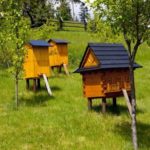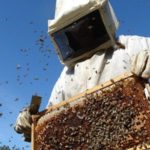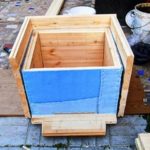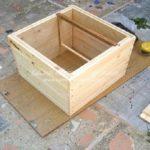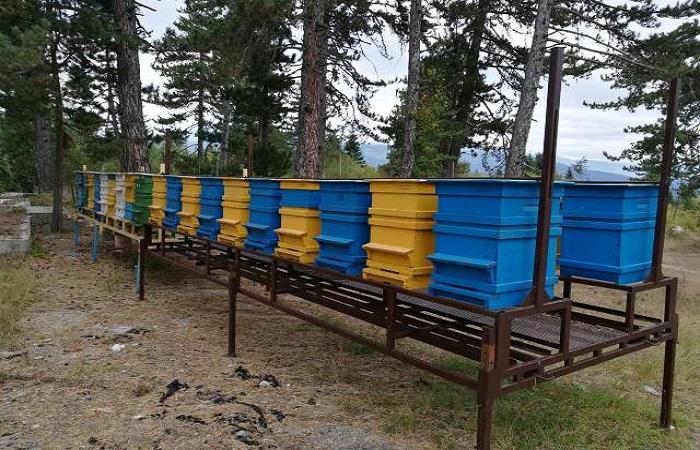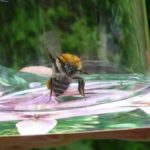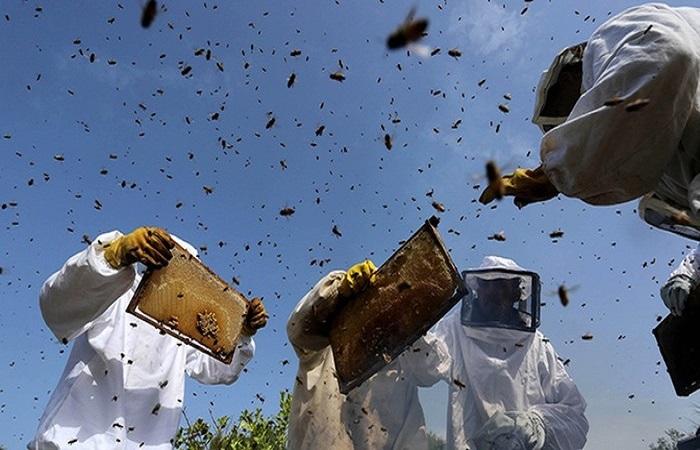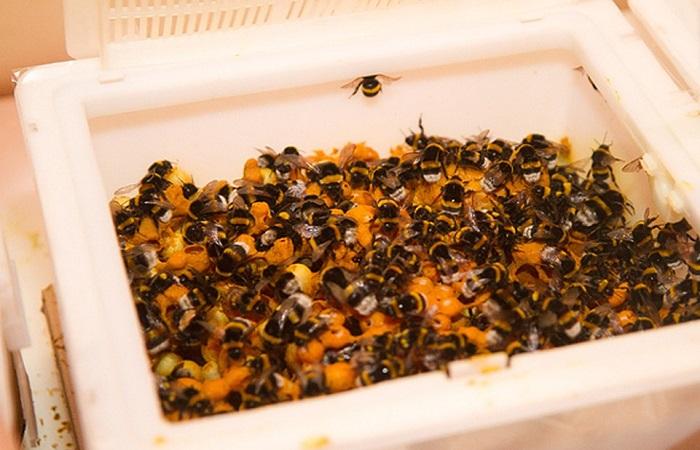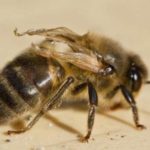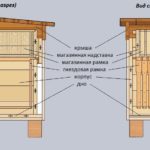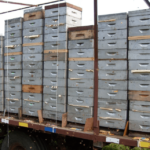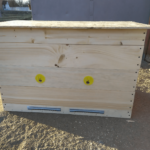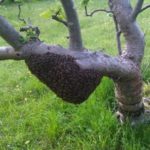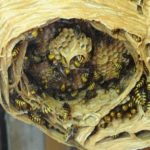Most cultivated plants require pollination to bear fruit, which directly depends on the activity of insects. To increase the yield and taste characteristics of future fruits, some gardeners and gardeners install a homemade bumblebee hive on their plot. Why do we need domestic bumblebees, and how to use insects correctly, we will look into the details further.
Features of bumblebee farming
The productivity of fruit and vegetable crops directly depends on the intensity of plant pollination.It is generally accepted that the most hardworking insects are bees, which collect pollen and nectar from honey plants, thereby pollinating them. But in case of weather changes and precipitation, their activity decreases, which negatively affects the yield.
- Bumblebees are characterized by excellent resistance to low temperatures and weather changes.
- Insects have the ability to maintain the required temperature of their body, which is covered with many villi.
- Hardworking minke whales are not afraid of low temperatures; they fly out of the hive at a temperature of +2 degrees, when most insects are still hibernating.
- Due to their dense coat, bumblebees are not afraid of rain, and are also able to see well in the dark.
- Striped workers work almost 18 hours a day, pollinating 4-5 times more plants than bees.
- Insects are not at all aggressive and do not require care.
Important! Bumblebees are bred both on agricultural farms and on private plots to increase the yield of vegetable, berry and fruit crops.
Making a hive with your own hands
In order to independently breed hardworking minke whales, they create comfortable living conditions for them. You can make a bumblebee hive yourself.
To work, you will need ordinary boards, plywood, several wooden slats, a small piece of foam plastic, insulation and a drill. Straw, tow or moss are used as insulation.
Stages of making a house for bumblebees:
- the boards are cut and used to make the base of a square box without a bottom or lid;
- then plywood is nailed as the bottom;
- the second piece of plywood is used for the lid, having previously attached 4 wooden slats to it;
- in one of the walls of the house it is necessary to punch 2 holes, one of which is tightly plugged with a stopper;
- polystyrene foam is laid out on the bottom of the finished box, covered with any natural insulation on top.
Advice! For convenience, high legs are nailed to the bumblebee hive and placed in a personal plot, close to flowering crops.
Choosing a location for installation
The timing of the removal of houses to the site directly depends on the weather and climatic indicators of the insect breeding region. In southern latitudes, work is carried out in mid- or late April, when the active growing season of plants begins. In temperate climates, hives are transported 2-3 weeks later.
The houses are placed next to fruit trees and bushes. Bumblebees are best attracted to thickets of raspberries, currants or gooseberries. The hive is placed so that the holes in it always face the south side. To get the maximum effect from the work of striped workers, you will need from 4 to 6 houses, placed at a distance of 4-5 meters from each other. Some of the hives can be buried in the ground. To ensure that insects can easily enter the house, a pipe with a length of 70 cm to 1 m is brought from the hive to the surface.
Important! To attract insects, the inner walls of the hive are rubbed with lemon balm or mint leaves.
How to move bumblebees into a new home
To breed a bumblebee colony, first of all, you will need a queen. The female insect is purchased from a special apiary or caught independently in natural conditions.
- The female is distinguished by its size; it is 2 or 3 times larger than ordinary insects.
- In spring, queens fly above the ground in search of a suitable place to create a nest.
- When catching, the hind limbs of the minke whale are examined.If there are no traces of pollen on them, it means that the insect has not yet acquired its own home and is suitable for raising a family.
- The queen is placed in a prepared hive, where she is provided with protein nutrition.
- The next step for the queen is to organize a nest and attract workers and drones.
Once the colony is complete, the house is filled with carbon dioxide released by the insects, which activates the bumblebees' reproductive functions. The stage of family creation ends with the appearance of larvae in the house and the selection of infertile females from the hive.
Important! The bumblebee hive must be kept clean, dead individuals and foreign elements that provoke the development of parasites must be removed from it.
Main differences from beekeeping
Unlike bees, bumblebees do not have a highly organized swarm, are not subject to outside control and are not tied to their own hives. The lifespan of bumblebees is short, lasting only 1 growing season, after which most individuals die of natural causes. Only the queens of bumblebees have viability, which by the end of autumn manage to be fertilized. Also surviving are young females who are born in late summer or early autumn; they are the ones who will bring offspring to the family the next year.
Important! A bee hive is a complex mechanism in which insects live, healing nectar ripens, propolis and other bee products are produced.
Bumblebee farming as a business
The bumblebee breeding business is at an early stage of development, but has already attracted interest from large agricultural complexes and farms. With the help of hardworking insects, the yield of various crops is significantly increased, their taste properties and product characteristics are improved. Many farmers specifically enter into contracts for the supply of populated bumblebee hives during the growing season.
Important! Insects actively pollinate plants not only in the natural environment, but also in greenhouse complexes, which increases the demand for their breeding.
What does income depend on?
The profitability of such a business is quite high. At minimal cost, the bumblebee breeder receives a bountiful harvest of garden and vegetable crops, plus he can implement a project for selling insects to farms and agricultural complexes. And since the bumblebee family is characterized by a short life span, such sales will be annual and will bring financial stability to the breeder.
Bumblebee farming in numbers
Before breeding a bumblebee apiary, you need to familiarize yourself with the approximate costs. The cost of a full-fledged family ranges from 3 to 5 thousand rubles. If you acquire 10 or more bumblebee families by the season, then during the growing season you can earn more than 50 thousand rubles.
The costs of building houses for insects are minimal, because scrap materials are used.

